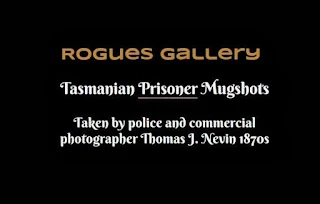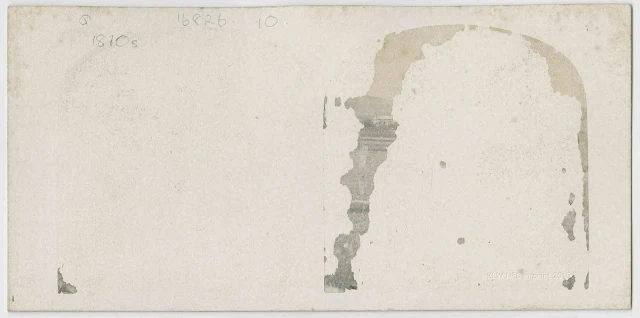Frederick STOPS, Emily TILLEY and descendants
Exhibitions and publications: T. J. NEVIN 1860s

Frederick Stops 1894
Photograph - Mr F. Stops, Tasmanian Exhibition, 1894-5
Season Ticket Holder - 4 Patrick Street
TAHO Ref: ADRI: NS738-1-2307
Source: Archives Office of Tasmania
Thomas Nevin's photograph of Melville Street under snow
Frederick Stops was a widower when he married Emily Tilley on 10th July 1867, his occupation listed then simply as Clerk. On 29th July 1868 when he registered the birth of his daughter Emily Frederica to his wife Emily Stops nee Tilley at Hobart, his occupation was listed as Clerk to Attorney-General . His son William Joshua Tilley Stops (W. J. T. Stops), who was born two years later on 26th May 1870, would become the Vice-Chancellor of the University of Tasmania and the owner of the photograph of "Melville St under snow" taken by Thomas Nevin in 1868.
Marriage of Frederick Stops and Emily Tilley,
St David's Church, 10 July 1867.
Witnesses were Fanny Pybus, Emily R. Wise, Fred W. Wise, and Josiah Pocock
TAHO Ref: NAME_INDEXES: https://libraries.tas.gov.au/Record/NamesIndex/870876

Last entry on page, 26th June 1868:
Birth of Emily Frederica to Emily Stops nee Tilley and Frederick Stops, Clerk to Attorney-General
TAHO Ref: NAME_INDEXES: https://libraries.tas.gov.au/Record/NamesIndex/971690
Frederick Stops and photographer Thomas Nevin were well acquainted for several reasons, the first being the dissolution of Thomas Nevin's partnership with Robert Smith operating as the firm "Nevin & Smith" in February 1868 which was underwritten by Frederick Stops' employer and Nevin's family solicitor, the Hon. W R. Giblin, Attorney-General.

Dissolution notice published in the Mercury on 26 February 1868 of the partnership between Robert Smith and Thomas Nevin. William Robert Giblin, later Attorney-General and Premier, was Thomas Nevin's solicitor and witness.
The second reason was their work on prisoner records. Thomas Nevin was granted government contracts with the Land and Survey Department in the same year, 1868 as his partnership with Robert Smith was dissolved by the Hon. W. R. Giblin. He commenced the systematic photographing of prisoners for Attorney-General W. R. Giblin in February 1872, assisted by Frederick Stops in his capacity as the Clerk to the A-G, (see William Clemo's prison record below). Thomas Nevin also worked with solicitor John Woodcock Graves jnr, and barrister Robert Byron Miller in the Supreme Court and Mayor's Court, Hobart Town Hall.
A third reason was more personal. When Frederick Stops married Emily Tilley on 10th July, 1867 at St David's, Hobart, their witnesses included Josiah Pocock, the brother of Rachael Day nee Pocock, She died in 1857 of consumption, leaving a widower, master mariner Captain James Day and two daughters, Mary Sophia Day (b. 1853) and Elizabeth Rachel Day (b. 1847). By July 1868, Thomas Nevin was courting Elizabeth Rachel Day, and would have counted her uncle Josiah Pocock and Frederick Stops among their circle of friends by the time they married in July 1871. Whatever it was about July in Hobart that was so favoured by this generation, it cannot have been a wish for warm weather.
In the same month as Emily Frederica was born to Frederick and Emily Stops in July 1868, Thomas Nevin took this photograph of Melville Street on a day of heavy snowfall which he exhibited at the Wellington Park Exhibition, Hobart. It was reproduced in the publication Tasmanian Photographers 1840-1940: A Directory (Tasmanian Museum and Art Gallery, 1995:82).

Melville Street under snow, July 1868.
Photograph by T. Nevin late A. Bock
City Photographic Establishment, 140 Elizabeth St. Hobart Town
TMAG Ref: Q9134
The verso of this photograph carries Thomas Nevin's most common commercial studio stamp and the wording "This by W. J. T. Stops Esq."which suggests that the photograph was presented to Frederick Stops by Nevin in 1868, perhaps as a gift to Emily Stops on the birth of their daughter, and was then passed down to his son W. J. T. Stops, who subsequently donated it to the Tasmanian Museum and Art Gallery from the Stops estate or from the University archives (Royal Society Collection) where more of Nevin’s photographs are held. It was then inscribed by an archivist on accession with the note - "This by W.J.T. Stops Esq".

Verso: Melville Street under snow, July 1868.
Photograph by T. Nevin late A. Bock
City Photographic Establishment, 140 Elizabeth St. Hobart Town
TMAG Ref: Q9134
Verso inscriptions:
C300 Hbt Melville Street
Pencilled: This by W. J. T. Stops Esq.
Kings Arms Murray St 1835
St. Mary's Catholic Burial Ground
W. Hobart July 1868

Son of Frederick Stops and Emily Tilley, William Joshua Tilley Stops 1894
Stone Buildings Hobart
Photograph - Mr William Stops, Tasmanian Exhibition, 1894-5, Season Ticket Holder
TAHO Ref: ADRI:NS738-1-2471
Obituary: Frederick Stops
MR. FREDERICK STOPS.OBITUARY. (1926, July 13).The Mercury (Hobart, Tas. : 1860 - 1954), p. 6. Retrieved September 26, 2015, from https://nla.gov.au/nla.news-article29451057
We regret to announce the death at his residence, Garstons, Patrick-street, yester-day, of Mr. Frederick Stops, possibly the last survivor of the earlier age of civil servants, at the advanced age of 92 years. He joined the Law Department on his arrival from England in 1855, and retired from it as its permanent head 40 years later, receiving on his retirement, addresses from the Southern Law Society and from the rural municipalities in acknowledgement of the assistance those bodies had received during his long period of service. Mr. Stops's memory will be kept green in legal and municipal circles by his editions of the Tasmanian statutes, the first of which he published in 1885, and the second, bringing the Acts up to the end of the reign of Queen Victoria, in 1900. This was really his life's work, for he published two indices to the Statute Law, which was in a chaotic condition, in 1860 and 1864, and these were subsequently enlarged in the editions of statutes so well known and much used in the world of law.
Outside his office, Mr. Stops was of a retiring disposition, and took little part in public affairs, but he was a territorial justice, a governor of the Kennerley Boys' Home, and was for 25 years, until the burden of years compelled his retirement, a churchwarden of Holy Trinity. His wife predeceased him, and he leaves a daughter, well known in Church of England circles for philanthropic work, and two sons, Mr. W. J. T. Stops, Vice-chancellor of the University of Tasmania, and Mr. F. N. Stops, Police Magistrate for the North- Western division.
'The funeral will take place at Cornelian Bay cemetery to-morrow morning.
SIR ELLIOTT''S REGRET.
"A RIGHT-HAND MAN."
Sir Elliott Lewis last evening expressed deep regret at the passing of Mr. Stops, and made fine reference to the work he carried out in the Attorney-General's Department. "He was a man for whom I had the deepest respect," said Sir Elliott Lewis, "and as a young Attorney-General he was extraordinarily helpful to me. The consolidation of the statutes, when he produced them, was a marvel of industry, care, and thoroughness. When I was Attorney-General in 1892 he was everything in that office. He was certainly the Attorney-General's right-hand man. He was draftsman of all the Acts of those days, and did the whole of the secretarial work practically alone. He drew up all the informations for the Criminal Court, and generally was a most conscientious and reliable officer."
Thomas Nevin, Frederick Stops and the prisoner photographs
Although this record of prisoner William "Clocky" Clemo is included in the Port Arthur Conduct Register for the years 1868-1869, further information about Clemo was inscribed on the second page pertaining to his conduct after he was transferred to the Hobart Gaol in 1873. He was discharged from the Hobart Gaol in the week ending 10th February, 1875. His name does not appear in the Port Arthur Conduct Register for the years 1873-1876 (TAHO Ref: CON94-1-2) because he was not at Port Arthur in those years. The second page of Clemo's record (below) was signed on the 17th March, 1874 by Frederick Stops, Clerk to the Attorney-General who contracted Thomas Nevin to photograph prisoners on arraignment and discharge. Frederick Stops and Thomas Nevin collaborated on collating information on prisoner records, both visual and written into the 1880s. This is Nevin's photograph of William Clemo, transported to Tasmania on the ship Equestrian 3 in 1852, sentenced to 7 yrs for “carnally assaulting a child under 12 years” in 1868 at the Supreme Court, Hobart:

Prisoner William Clemo, photographed by T. Nevin, 10 February, 1875 at the Hobart Gaol.
Source of image: QVMAG Ref: PH_PH30-3s_30-3229c
Prisoner William CLEMO
TAHO Ref: CON94-1-1_00104_L
CON94/1/1 Conduct register - Port Arthur 01 Jan 1868 - 31 Dec 1869
Copy Number:Z1436

DETAIL of Page 2, William Clemo's prison record with the signature of Frederick Stops, Attorney General's Office, 17th March 1874.
RELATED POSTS main weblog



























